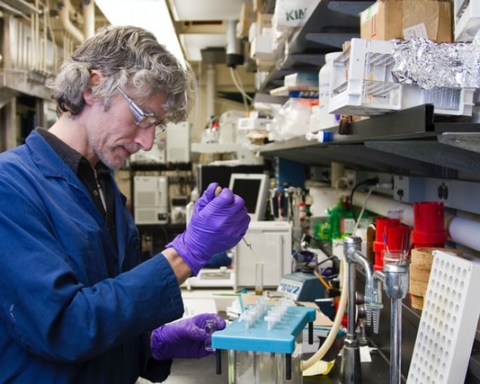In the late 1990s, industry experts predicted the pharmaceutical industry would increasingly struggle to fulfill the world’s medical needs. Aging populations and rising affluence mean consumers’ expectations are greater now than ever. But the late 20th century projections were accurate — Research and Development(R&D) costs have continued to climb steadily, even as the number of new molecular entities (NMEs) and biologics is dropping. Essentially, the industry is spending about twice as much on R&D as it did a decade ago. Yet the number of new drugs produced is less than half of what it was.
[wp_ad_camp_4]Pressure is mounting on the industry to reduce costs and demonstrate the value of a given product. Social and political stresses are driving changes that may further squeeze profits. Misperception is part of the problem. According to PricewaterhouseCoopers, in 2006 nearly two-thirds of Americans said they believed spending on prescription drugs accounts for up to 79 percent of healthcare spending. This is highly inaccurate. The actual figure is closer to about 10 percent.
Even so, the pharmaceutical landscape is shifting like quicksand. Globally, healthcare’s focus is changingfrom disease treatment to disease prevention. Chronic diseases, “lifestyle” diseasesand diseases of affluence—such as those linked to obesity—are becoming more common in industrialized and developing countries.
The new focus on disease prevention presents a host of opportunities for big pharma. Indeed, there’s an ongoing “arms race” to develop treatments to prevent or “cure” obesity. Andthere’s a focus on developing vaccines to combat conditions that previously seemed like inappropriate vaccination targets — ranging from food allergies, to Alzheimer’s disease, to hypertension, to psoriasis and beyond.
Cancer treatment obviously remains fertile ground for innovation, and also provides an example of how vaccines may play an important role. For example, Gardasil is a successful vaccine against the human papilloma virus. It slashes women’s risk of developing cervical cancer dramatically, and has already been embraced by public health officials and governments as a vaccine worthy of widespread, routine use.
Companies that best understand the pathophysiology of a given disease will be the most successful, in the future, at developing effective treatments or preventives. The old model is simply too costly — in terms of marketing time and financial investment. To remain competitive, pharmaceutical manufacturers will need to test the hypotheses underlying a given new molecule at much earlier stages in the development process. Presently, many molecules fail in the Phase III testing phase, long after significant resources have been squandered, developing a poorly understood molecule.
[wp_ad_camp_1]
Pharma’s portfolio is rapidly changingfrom mass markets treatments to more individualized therapies. By next year, biologics and bioengineered vaccines are expected to account for about one-quarter of the global market regarding value. Products will continue to diversify, driven by new technologies such as nanotechnology, tissue re-engineering and stem cell research.
Nanotechnology to the Rescue
Nanotechnology, in particular, is poised to improve healthcare by enhancing efficacy, safety and patient compliance. Compliance is an important concern — many patients do not follow their doctor’s instructions regarding medications. Some prescriptions go unfilled, while others are not taken on schedule, or courses are not completed as directed.
Nanotechnology facilitates the delivery of therapeutic agents to targeted cells, and presents the opportunity to develop nano-scale machines that can monitor how drugs are distributed and metabolized in the body. More than 100 such drugs are already available or under development. These nano-therapeutics have improved the adsorption, distribution, and duration of medicines. Development of these entities usually requires the use of high pressure and high shear homogenizers.
Nanotechnology will be harnessed to improve bioavailability and targeting of existing therapeutic molecules. According to the Nanotechnology Industries Association, more than 200 nanotechnology-enabled products have already undergone clinical trials and are providing substantial benefits to patients due to reduced side effects and moreprecisely targeted delivery of medications. Nanomaterials are also advancing diagnostics by facilitating the development of rapid screening processes with enhanced specificity and sensitivity.
Nanotechnology will also continue to drive the development of all new therapeutic entities. For example, nanomaterials can be employed to create personalized implants and engineered tissues. Already, scaffolding for certain body structures has been created using 3-D printing technology combined with nanomaterials. Tissue-engineered scaffolding using nanotechnology has cut recovery times for patients needing bone grafts, for example. The resulting structures suffer none of the drawbacks of natural materials, which often present problems related to allergenicity, contamination or procurement.
Cosmetics and other personal care products benefit from nanotechnology when the technology is used to create nanoemulsions. Nanoemulsions combine immiscible compounds, such as water and lipids, in nano-scale packages, which can be delivered directly to the skin’s surface. Delicate components such as vitamins or other sensitive molecules are more readily protected from interaction with oxygen in this way. Only upon contact are the contents of these liposomes released — this enhances product stability, shelf life and effectiveness.
Conclusion
Given the challenges facing the pharmaceutical industry, it will become even more important to understand disease pathophysiology at the outset of any new drug development cycle. Nanotechnology promises to improve drug delivery and efficacy, while reducing side effects and facilitating monitoring and compliance—all of which will enhance pharma’s bottom line in a continually competitive world.








